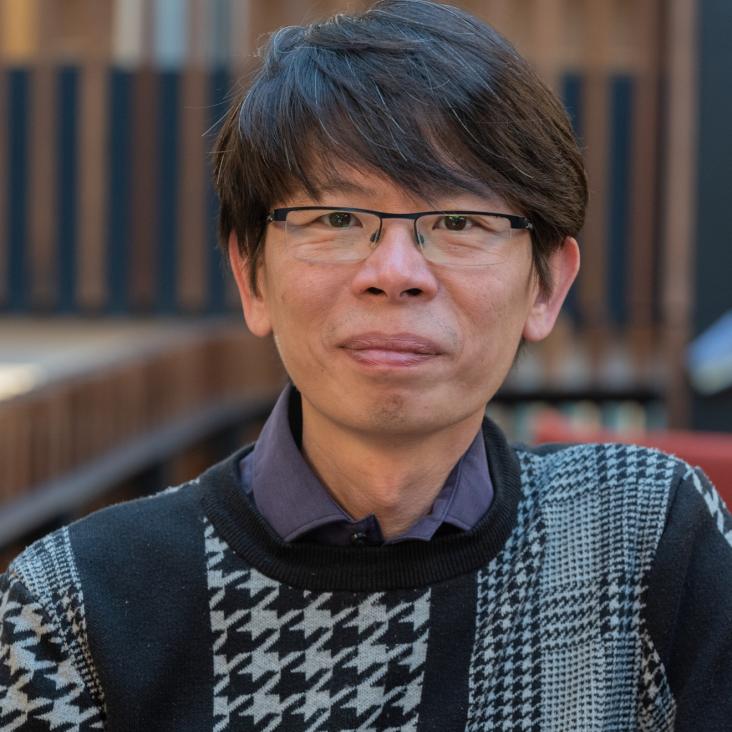QSHS: an axion dark matter resonant search apparatus
New Journal of Physics IOP Publishing 27:10 (2025) 105002
Abstract:
We describe a resonant cavity search apparatus for axion dark matter constructed by the quantum sensors for the hidden sector collaboration. The apparatus is configured to search for QCD axion dark matter, though also has the capability to detect axion-like particles, dark photons, and some other forms of wave-like dark matter. Initially, a tuneable cylindrical oxygen-free copper cavity is read out using a low noise microwave amplifier feeding a heterodyne receiver. The cavity is housed in a dilution refrigerator (DF) and threaded by a solenoidal magnetic field, nominally 8 T. The apparatus also houses a magnetic field shield for housing superconducting electronics, and several other fixed-frequency resonators for use in testing and commissioning various prototype quantum electronic devices sensitive at a range of axion masses in the range 2.0– 40μeVc−2. The apparatus as currently configured is intended as a test stand for electronics over the relatively wide frequency band attainable with the TM010 cavity mode used for axion searches. We present performance data for the resonator, DF, and magnet, and plans for the first science run.Parametric amplification in a Josephson junction array Fabry-Pérot cavity
Physica Scripta IOP Publishing 100:9 (2025) 095016
Abstract:
Superconducting Parametric Amplifiers (SPAs) with near-quantum-limited added noise are crucial for weak signal detection applications such as astronomical receivers, quantum computation, and fundamental physics experiments. Commercially available SPAs include Josephson Parametric Amplifiers (JPAs), which offer high gain but narrow bandwidth performance; and Josephson-junction Travelling Wave Parametric Amplifiers (JTWPAs), which provide broader bandwidth at the cost of a complicated fabrication procedure, lower fabrication yield, and larger footprint area. In this paper, we investigate the parametric amplification of microwave signals in a Josephson array embedded in a low-Q Fabry-Pérot cavity. We fabricated a 500-junction array device and measured >15 dB phase-preserving gain over a ∼350 MHz bandwidth, while offering almost two orders of magnitude improvement in compression point (P1dB = −106.2 dBm) compared to standard JPAs. Furthermore, using a novel measurement technique, we configured our device to operate in the phase-sensitive mode, measuring a phase-sensitive extinction ratio (PSER) of 42.3 ± 2.81 dB, in line with state-of-the-art values for JPAs. These promising performances, combined with the ease of fabrication and improved yield compared with JTWPAs, underscore the potential of these devices for applications in advanced detection schemes.Analysing the RF & IF bandwidth performances of ALMA Band-9 superconducting mixers for wideband sensitivity upgrade
Superconductor Science and Technology IOP Publishing 38:8 (2025) 085001-085001
Abstract:
<jats:title>Abstract</jats:title> <jats:p>The Atacama Large Millimetre/Sub-millimetre Array (ALMA) wideband sensitivity upgrade (WSU) project marks the next milestone in the development of millimetre (mm) and sub-mm astronomy. In this paper, we present the design, optimisation, and performance analysis of the ALMA Band-9 superconductor-insulator-superconductor (SIS) mixer for applications in the upcoming WSU programme, and other high-frequency astronomical observations. The mixers feature a niobium radial-rectangular probe antenna integrated with a silicon-on-insulator (SOI) substrate, which ensures minimal RF power leakage and optimised power coupling. We base our mixer design on conventional aluminium oxide (AlO<jats:sub> <jats:italic>x</jats:italic> </jats:sub>) tunnel junction technology, with a critical current density of about 10 kA cm<jats:sup>−2</jats:sup>. We explore the impact of different junction sizes on the radio frequency (RF) and intermediate frequency (IF) bandwidths. We demonstrate that the new mixer design is capable of meeting the more stringent sensitivity-bandwidth requirements of the ALMA-WSU programme over the original Band-9 frequency range (602–720 GHz), as the IF bandwidth performance reaches up to 20 GHz. The IF bandwidth improvement is approximately double that of the current existing ALMA Band-9 mixers. These results suggest that our mixer designs provide a promising solution for future ALMA upgrades and other high-frequency applications requiring broad RF and IF bandwidth.</jats:p>Extending the kinetic-inductance travelling wave parametric amplifiers coupled-mode framework to other symmetric nonlinear mediums with χ ( 3 ) nonlinearity
Superconductor Science and Technology IOP Publishing 38:7 (2025) 075008
Abstract:
Superconducting travelling-wave parametric amplifiers (TWPAs) play a vital role in a range of high-sensitivity applications. These devices can be realised using various superconducting materials, such as high kinetic inductance films or low-loss transmission lines embedded with discrete nonlinear elements like Josephson junctions (JJs) or superconducting quantum interference devices (SQUIDs), and can operate across different wave-mixing regimes. However, a unifying framework for quick assessment and thus efficiently evaluating the performance of these diverse TWPA architectures, particularly during the design phase, remains lacking. Most existing models are derived from first principles for specific TWPA designs and lack general applicability. While certain simulation program with integrated circuit emphasis (SPICE) tools can more accurately emulate TWPA behaviour post-design, they are typically computationally intensive, time-consuming, and offer limited physical insight; especially regarding key performance-determining factors such as phase matching. This, in turn, impedes the rapid identification of optimal TWPA configurations. In this work, we extend a previously introduced framework for kinetic-inductance (KI-) TWPAs and demonstrate its applicability to a broader class of χ(3)-type TWPA configurations, including bare JJ (JTWPA) and symmetric SQUID-based TWPAs, operating in all wave-mixing modes. This approach facilitates rapid design-space exploration prior to detailed optimisation using SPICE-based simulations. Our method accommodates a wide range of unit cell topologies and meta-material parameters without requiring ground-up derivations from first principles. We validate the framework by comparing it against representative models from the literature, including JJ-, KI-, and DC SQUID-based TWPA designs, and show that it reliably captures the first-order behaviour of their gain–bandwidth characteristics.An initial concept of a resonance phase matched junction-loaded travelling wave parametric tripler
ISSTT 2024 Proceedings National Radio Astronomy Observatory (2025)


